All about cherry and bird cherry hybrids
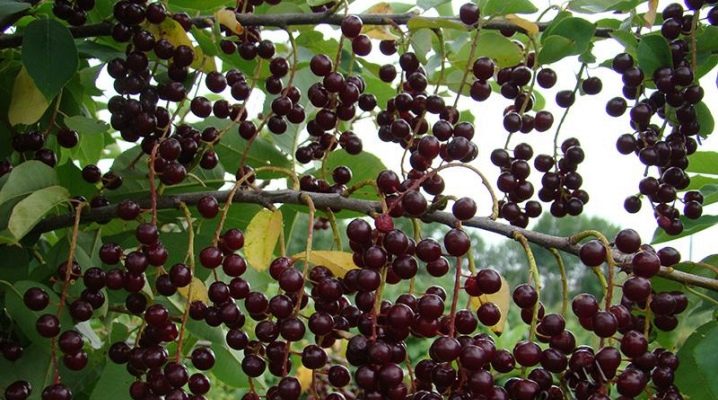
Cerapadus is an artificially bred plant obtained by crossing bird cherry and cherry... The hybrid is highly resistant to frost and disease, has good yields and yields tasty berries. Cerapadus fruits can be eaten whole or used in homemade preparations, and therefore the plant is often found in personal plots.

History of appearance
The plant owes its appearance to the Russian biologist I. V. Michurin, who bred several different varieties of fruits and berries during his life. The scientist, who decided to improve the quality of cherries, conducted a series of experiments on interspecific selection. The bird cherry was chosen as the second experimental, but the crossing did not give any results. During the second experiment Michurin used bird cherry of the Maak species. The breeder was in luck: hybridization was successful.
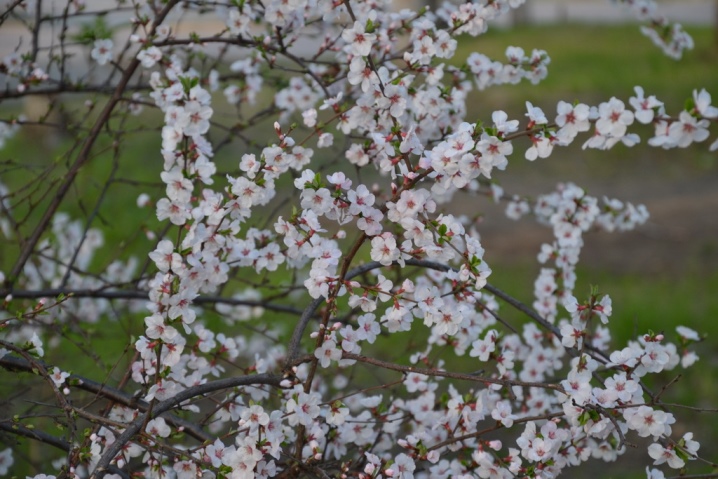
The resulting hybrid of cherry and bird cherry was named cerapadus, which came from the Latin names of both plant varieties: Cerasus and Padus.
Cerapadus was obtained when cherry was used as a mother plant. If the roles of the parents changed, and the bird cherry was considered maternal, a padocerus was born.
Types and varieties
The plant is a bushy cherry-like tree with abundant foliage. When the cerapadus begins to bloom, the tree becomes covered with flowers similar to bird cherry, but devoid of the famous scent. The leaves of the plant are elongated and resemble cherry, the fruits are round, saturated scarlet or dark in color. The taste of the berries is close to cherry, but not so sour.
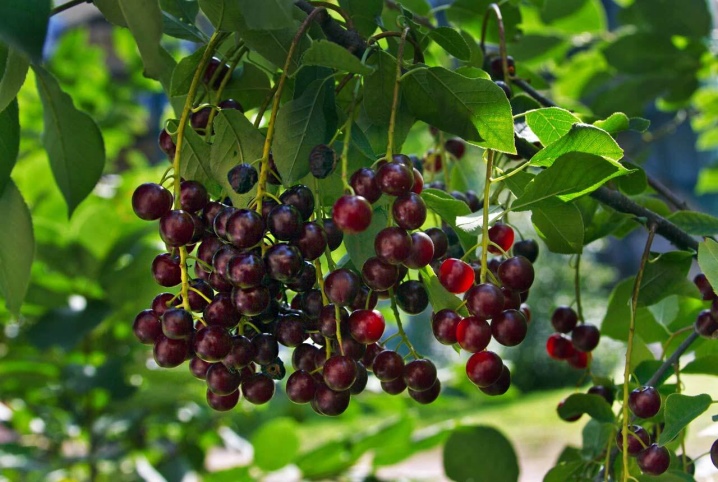
Michurin described two main types of hybrids. To date, breeders have bred several varieties within each species, differing in the grown berries, but similar in characteristics.
Cerapadus
Cerapadus has the following characteristics:
-
can serve as a stock for cherries;
-
high fertility;
-
frost resistance;
-
unpretentiousness;
-
good immunity to diseases, low susceptibility to garden pests;
-
has self-pollination, but the presence of additional pollinators will only have a beneficial effect on productivity;
-
due to its neat appearance and beautiful flowering, it serves as a decoration of the garden.
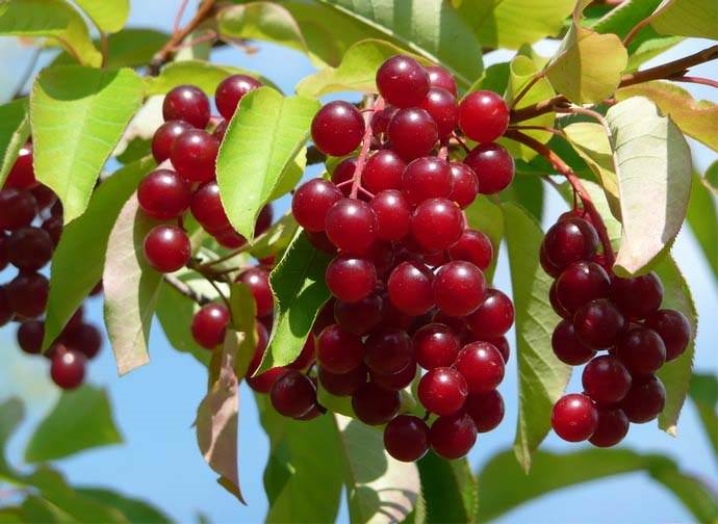
Cerapadus fruits are similar to cherries in both taste and appearance. The color of the berries varies depending on the variety: from red and maroon with a bluish tint to completely black fruits.
The most common variety among gardeners "Novella" is a three-meter tree with clusters of small black berries. The surface of the fruit is glossy, the skin is thin. The taste of the berries is sweet, but slightly tart. The variety is medium early, self-pollinated.
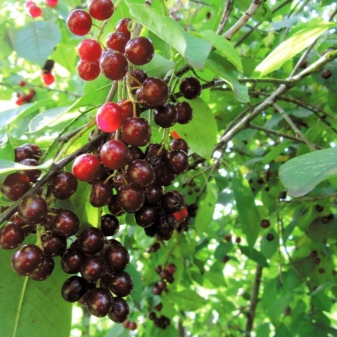
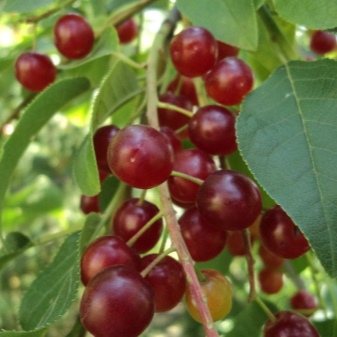
"A meeting" - a low tree (about 2.5 m) with large coral-red fruits. The variety is early ripening, self-fertile.
Variety "Rusinka" It is represented by a small self-pollinating shrub of medium early maturity. The standard height is 2.5 m. The berries of the variety are small, close to black in color and have a sweet and sour taste. The fruits of "Rusinka" are often not eaten fresh, but used as a base for jams and juices.
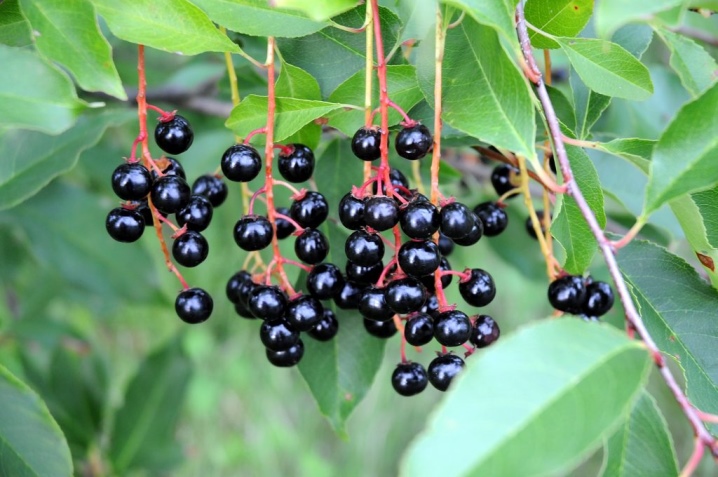
"Firebird" - a branched bush with dark red fruits. It reaches a height of 2.5 m. The taste of the berries is sweet, but tart, more reminiscent of bird cherry than cherry.In terms of yield parameters, it is not inferior to other varieties, however, it tolerates frost weaker, therefore it requires planting in regions with warm climatic conditions.
And also among gardeners varieties are known "Alice" and "In Memory of Lewandowski", which are shrubs with juicy fruits.
The last variety is interesting in that it does not possess self-fertility, and therefore requires the obligatory presence of pollinators.
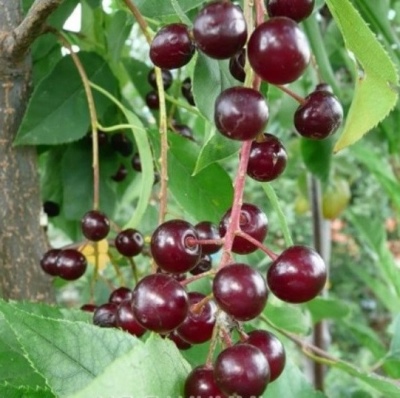
Padocerus
The characteristics of the padocerus are almost identical to the cerapadus. You can distinguish between plants by the appearance of the tree and fruits. Visually, padocerus looks more like a bird cherry than a cherry: lower and bushy. The berries of the hybrid grow in dense, numerous clusters, usually darker in color than that of cerapadus. The shade of the fruit starts from dark red and approaches black.
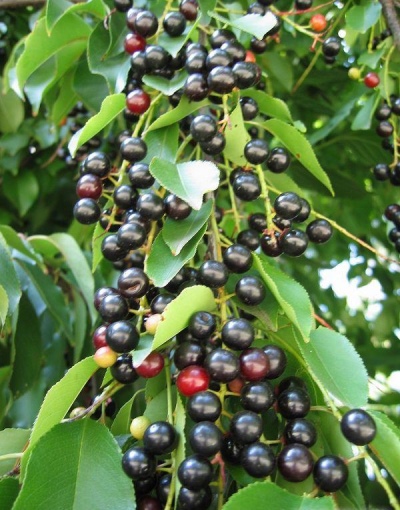
The main hybrid of the plant was Padocerus-M. Subsequently, several varieties were bred from it, among which the most popular are "Kharitonovsky" and "Long-awaited".
"Kharitonovsky" grade represented by a low tree (up to 3 m) with large bright red berries. A characteristic feature of the variety is the need for pollinators, since this padocerus is not self-fertile. The plant has excellent characteristics: yield, unpretentiousness, excellent resistance to high frosts and temperature extremes.
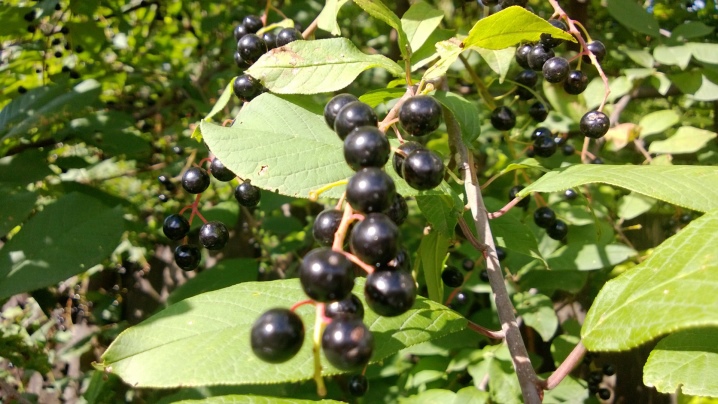
"Long-awaited" - a shrub that has a highly developed root system and large fruits. The berries of this variety more than others resemble cherries and have similar taste and external properties to it: a dark burgundy color, oozing pulp and a large bone, which is easily separated from the fruit itself.

Landing
Cherry and bird cherry hybrids are planted in the spring or fall season. Pits are dug in advance, the period depends on the chosen season: spring pits are prepared in autumn, in autumn three weeks of exposure will be enough. The dimensions of the hole are 60-70 cm in diameter, the depth is half a meter. Cerapadus should grow in an open area not limited by fences. If groundwater passes under the landing site, its height must be taken into account. The desired distance is no higher than a meter to the surface of the earth. Otherwise, the root system of the plant can quickly rot from excess moisture.

Before planting, it is recommended to add fertilizers to the pit, on top of which the cerapadus is installed. The seedlings themselves must be soaked in water for several hours in order to saturate the roots and promote rapid growth in a new place.
Plan for the correct planting of seedlings.
-
Fertilizers must be added to the wells prepared in advance. The resulting slide does not need to be tamped.
-
The seedling must be carefully placed in the hole and the roots spread over the top of the fertilizer.
-
Fill the hole halfway with earth.
-
The soil is compacted, after which the pit must be filled with warm water (2 buckets are enough).
-
When the liquid is absorbed into the ground, the soil around the trunk is covered with peat.
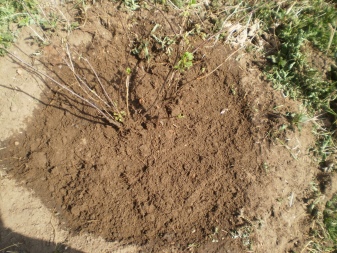

When planting several seedlings at a time, it is important to maintain a distance of 3 m between the holes to be dug.
Care
Cherry and bird cherry hybrids are completely unpretentious in maintenance and do not require special care. Cerapadus care includes standard watering, pruning and feeding procedures.
Watering depends on the age of the plant. Young trees, especially seedlings, should be watered every 10 days. Adult Cerapadus and Padocereus do not require watering, since they have enough moisture obtained from the soil after rains. You can purposefully water adult plants 3 times per season. After the past heavy rains around the trunk, you can loosen the ground so that excess water does not form on the surface.
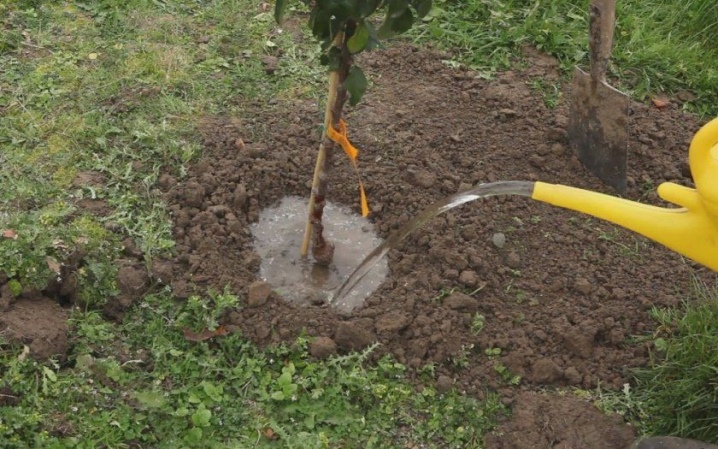
Active feeding of hybrids is not required. Additional fertilizers are added every 2 years. During the flowering period, nitrogen is applied, organic fertilizers are added in the middle of the summer season, and mulch is added closer to autumn.
Pruning cerapadus begins from the very first year, giving the crown a shape. The stage of formation lasts for 5 years of the life of the plant, after which pruning is carried out only if necessary (elimination of dry or diseased branches).
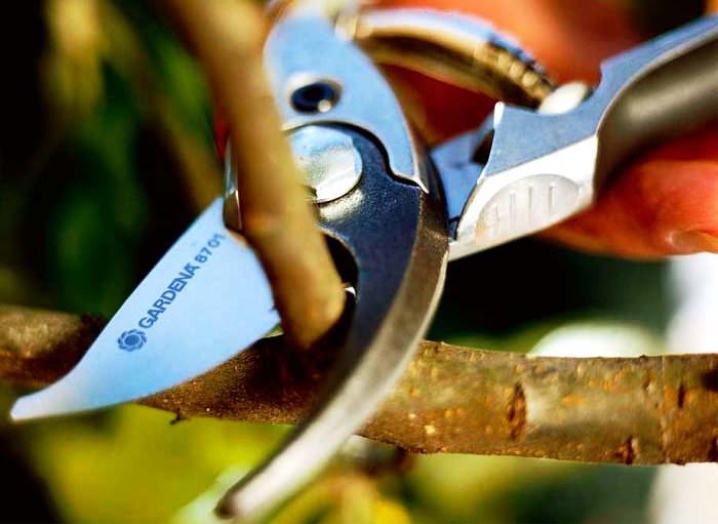
Since a hybrid of cherry and bird cherry has increased resistance to garden pests, it is not necessary to carry out thorough treatments. For preventive purposes, it is enough to treat the trees with Bordeaux liquid until the buds open.
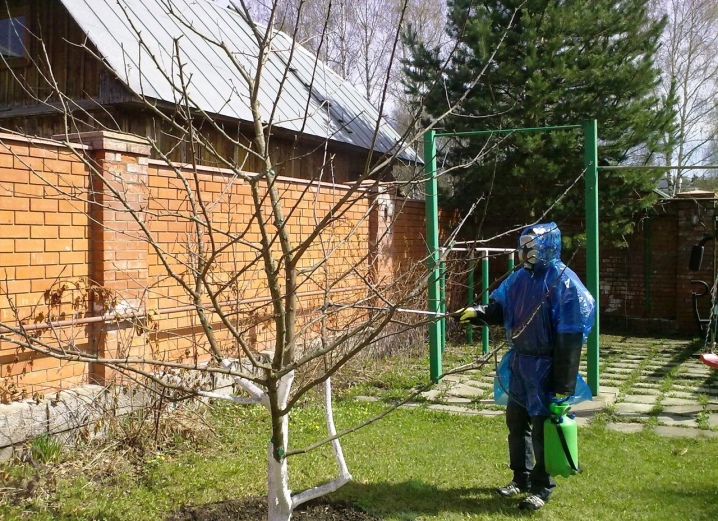
Reproduction methods
Propagation of hybrid trees is possible in two ways: by cuttings and using root shoots.
Cuttings
In order to propagate the plant, you will need mature trees that have been growing for more than 5 years. The hybrids from which the shoots are cut should be in the active phase of fruiting. To cut the cutting, the youngest shoots are selected on the tree, the tops of which become future independent plants. The approximate length of a properly cut scion is 8 cm.
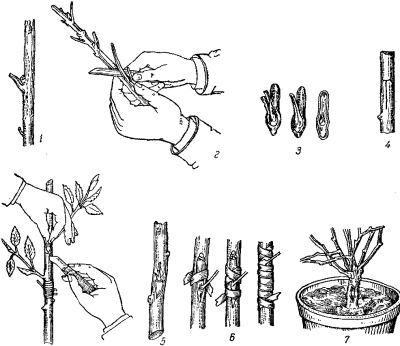
After cutting the cutting, the plant must be planted in the soil with nutritious dressings, then removed from the light until the roots form. After the root system develops in the shoot, it is transplanted to a new place.
Root shoots
To propagate padocerus using shoots, it is enough to dig up a few pieces growing near the mother tree and transplant them into a separate hole prepared according to all the rules for planting hybrids.
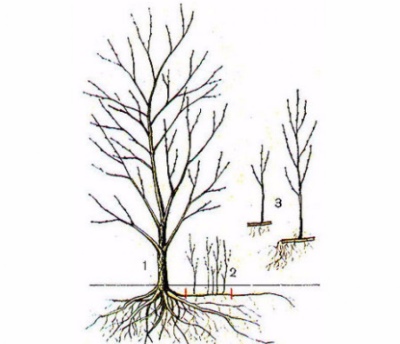
Diseases and pests
Bird cherry and cherry hybrids have good immunity to most diseases that garden plants usually suffer from. It is also known that cerapaduses are of little interest to insect pests.
Of course, a hybrid tree does not guarantee complete protection against diseases. The most common disease that occurs in these plants is powdery mildew. It is easy to find out about the problem by looking at the leaves: diseased foliage becomes covered with a whitish bloom, which over time thickens and exposes the plant to rot. To stop the spread of the disease, it is necessary to remove all diseased leaves and treat the tree with fungicides. And also these solutions can be used for periodic preventive treatments.
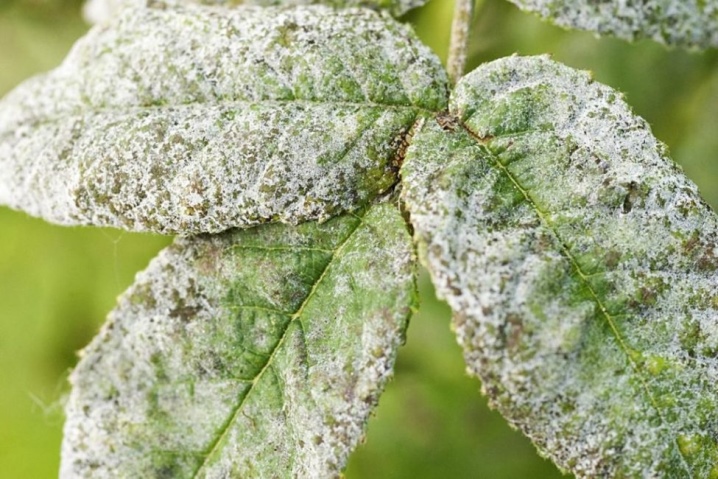
The only pests that are sometimes found on Cerapadus and Padocerus are called aphids and scale insects. Aphids can be detected by the characteristic curling of the leaves covered with a whitish bloom. Scabbard leaves yellow-brown spots that quickly cover the entire leaf. Laundry soap is an excellent folk remedy in the fight against these pests: you need to dissolve one piece in a bucket of warm water, then spray the plants with the resulting solution 2 times a day.














The comment was sent successfully.